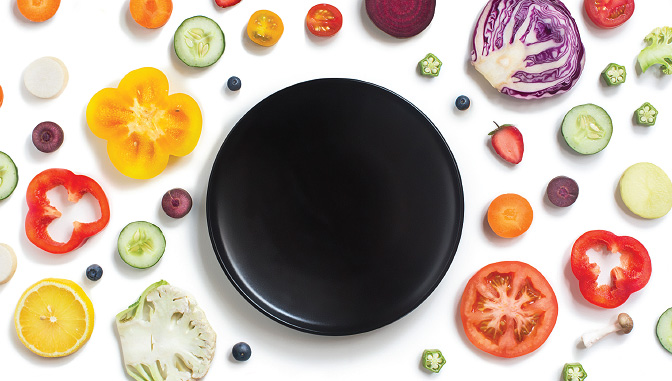Smart Eating

FIVE TIPS FOR A HEALTHY DIET
How do we determine what we are supposed to eat without risking harm to our body? How do we move beyond following the latest trend to embrace a healthy eating lifestyle? Unfortunately, there is no one simple answer, and sometimes the easy way can seem like the best way. That’s when many people turn to fad diets. Fad diets promise quick weight-loss results, although they usually include an unhealthy and unbalanced diet. They allow a very low caloric consumption, ultimately leading to short-term weight loss, but don’t educate the public on how to eat a sustainable, nutritious menu that they can adopt long-term.
Here are five strategies that we can all apply to eat better and lead us on the track to a healthier lifestyle.
1.EDUCATE YOURSELF ABOUT EATING OUT.
Americans eat out four times per week on average. If you do, it is important to pay attention to the calories in your food. There are many hidden calories in take-out, but luckily, many food chains provide nutritional values, including calorie counts, for menu options. A typical person’s daily caloric consumption should be around 2,000 calories per day. If I decide to order a prepared salad at a fast food restaurant, thinking that is one of the healthiest choices on the menu, that salad could well constitute ¼ to ½ of my recommended daily caloric intake. Dressing, processed meats, croutons, and other toppings can dramatically increase calorie, fat, carbohydrate, and even sodium intake.
2.KNOW THE NUTRITIONAL NUMBERS.
Nutritional resources such as the American College of Sports Medicine and healthypeople.gov provide excellent recommendations on daily nutrient intake. For example, experts recommend a daily fat intake of no more 30 percent of our daily calories. If I am on a 2,000-calorie diet, my intake should be no more than 66 grams of fat per day. Going back to the fast food salad: if 2 tablespoons of dressing constitutes 25 grams of fat, I am left with 41 grams of fat for the rest of the day. Prepackaged, convenience, and restaurant foods can contain a lot of fat and calories!
3.READ THE LABELS.
Sometimes it’s a lifesaver to eat convenience foods. You may be balancing work, college, family, and other demands. Once you know the nutritional numbers, learn to read the labels. Then make it a lifelong habit. The Food and Drug Administration has an excellent overview on reading nutrition labels.
4.EAT PROTEIN WITH EVERY MEAL.
This may sound strange, as protein is often associated with weight gain, but protein is an essential macronutrient that helps rebuild our tissues, hair, nails, skin, and much more. Most people do not get enough protein in their daily diets. Insufficient protein leaves people hungry. When feeling hungry, people tend to eat more carbohydrates or fat, which can increase blood glucose and calorie counts.
5.WORK WITH A LICENSED DIETICIAN.
Nutrition is an ongoing battle, with a lot of inaccurate information. If you want to lose weight or alter your diet, you may need professional assistance to get started safely. Every person is wonderfully unique, and we all have different caloric needs. Dieticians can determine what a safe weight-loss program can be for that person. Most fads do not take individuality into consideration. Extremes in dietary change and weight loss can cause more harm than good in the long term.
Our food is the fuel that keeps our bodies and minds functioning at peak efficiency. Following the first four steps is vital to survive and thrive in our own bodies. If you are at all confused, follow Tip 5 and work with a professional. You can also learn more by taking HSC 403 Nutrition for Health and Wellness or HSC 304 Exercise for Health and Wellness.


